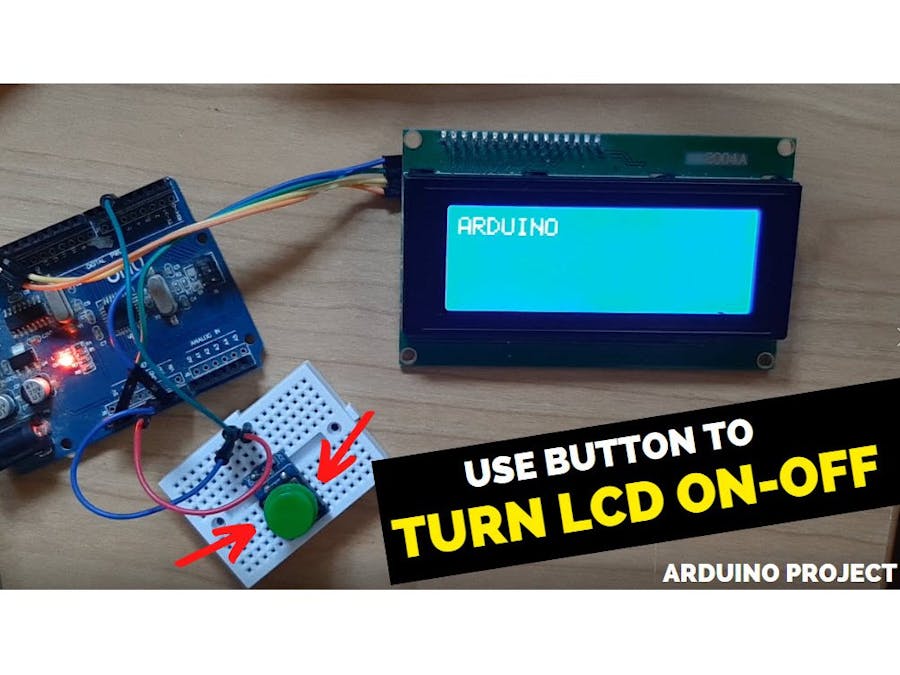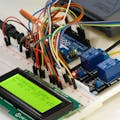- Arduino UNO (or any other Arduino or ESP)
- LCD I2C
- 1K ohm resistors
- LED
- Button
- Jumper wires
- Breadboard
- Visuino program: Download Visuino
Thank you PCBWay for supporting this tutorial and helping users learn more about electronics.
What I like about the PCBWay is that you can get 10 boards for approximately $5 which is really cost effective for professional made boards, not to mention how much time you save!
Go check them out here. They also offer a lot of other stuff in case you might need it like assembly,3D printing,CNC machining and a lot more.
Step 3: The Circuit- Connect LCD pin [SCL] to Arduino pin [SCL]
- Connect LCD Display pin [SDA] to Arduino pin [SDA]
- Connect LCD Display pin [VCC] to the breadboard positive pin [5V]
- Connect LCD Display pin [GND] to the breadboard pin [GND]
- Connect Arduino Digital pin [4] to the Resistor and button
- Connect other side of the resistor to the breadboard pin [GND]
- Connect Other pin of the button to the breadboard positive pin [5V]
Start Visuino as shown in the first picture Click on the "Tools" button on the Arduino component (Picture 1) in Visuino When the dialog appears, select "Arduino UNO" as shown on Picture 2
Step 5: In Visuino Add Components- Add "Debounce Button" component
- Add "Toggle(T) Flip-Flop" component
- Add "Liquid Crystal Display (LCD) - I2C" component
- Select "LiquidCrystalDisplay1" and in the properties window set "Columns" to 20 and "Rows" to 4
Note: if you are using a different LCD that is not 20X4 then use Columns and Rows for that LCD
- Select "LiquidCrystalDisplay1" and in the properties window select "Enabled" and click on the pin icon and select "Boolean SinkPin"
- Double click on the "LiquidCrystalDisplay1" and in the "Elements" window drag "Text Field" to the left and in the properties window set "Initial Value" to ARDUINO
- Close the "Elements" window
- Connect Arduino digital pin[4] to "Button1" pin [In]
- Connect "Button1" pin [Out] to "TFlipFlop1" pin [Clock]
- Connect "TFlipFlop1" pin [Out] to "LiquidCrystalDisplay1" pin [Enabled]
- Connect "LiquidCrystalDisplay1" pin I2C [Out] to Arduino pin I2C [In]
In Visuino, at the bottom click on the "Build" Tab, make sure the correct port is selected, then click on the "Compile/Build and Upload" button.
Step 9: PlayIf you power the Arduino module, The Display will show the Text, if you press the button, the Display will Turn On or Off.
Congratulations! You have completed your project with Visuino. Also attached is the Visuino project, that I created for this tutorial, you can download it and open it in Visuino: https://www.visuino.eu




_ztBMuBhMHo.jpg?auto=compress%2Cformat&w=48&h=48&fit=fill&bg=ffffff)















Comments
Please log in or sign up to comment.